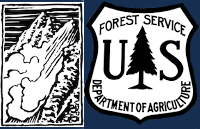The debris field was estimated to be 4-500 feet wide and up to 6 feet deep. Photo: GNFAC
20-21
The bed surface was a uniform 37 degree steepness. Photo: GNFAC
The crown was 1.5-2' deep and broke on a layer of faceted crystals. Photo: GNFAC
Skiers triggered this avalanche on Flanders Mountain on 1/9/21. It was triggered out of the photo to the right on a seperate slope around the corner. It propagated over 1000' wide, and looks to be 6' deep at deepest. Photo: A. Blackmer
Skiers triggered this avalanche on Flanders Mountain on 1/9/21. It propagated around the corner over 1000' wide into an adjacent path.
Forecast link: GNFAC Avalanche Forecast for Mon Jan 11, 2021
Forecast link: GNFAC Avalanche Forecast for Sun Jan 10, 2021
Cracking and Collapsing at Hebgen Lake
From obs: "Skied Lionhead above Hebgen Lake today. Had cracking and collapsing almost constantly on the ascent and along the ridge line. Stuck to low angle terrain and did not trigger anything that moved. No natural avalanche activity."
Collapses and Whumph in N. Madison
I skied in the Northern Madison range today. We had 3 big whumps/collapses on a NE aspect between 7600 and 8000 feet. Kept the slope angle low so nothing slid. The snowpack was about 80 to 90 cm deep outside of tree cover. The skiing was good quality powder skiing.
We dug a pit on that slope and got an ECTP 23. Not super clean shear quality as it was on the facet layer on the ground.
Skier triggered large slide on Flanders Mountain
From obs: "We dug a pit and found a really weak snowpack! Regardless of the poor stability result, we proceeded to ski an East facing bowl south of Flanders Mountain knowing that the slope angle was low and only flirted with 30 degrees in some parts of the bowl. We could have chosen to ski the trees further to our left, but after evaluating the consequence associated with skiing the bowl, we decided that the center of the bowl did not pose too big a risk given we skied one at a time. My partner skied first, he skied practically all the way back to the skin track when the slope failed and the entire bowl released. He was pretty well out of the way of danger by the time the bowl began to move. From our perspective, the trigger happened at the bottom of the slope.... The bowl was not the only slope that slid, the avalanche propagated around the ridge and released a slide on the more south-easterly facing aspect just south of the bowl. We tail-tucked and went home glad no one was caught or hurt."
GNFAC forecasters visited the site on 1/11/21. We measured the maximum slope angle in the start zone at 35 degrees with an average slope angle of 33 degrees. The debris in each path was up to 2-3 meters deep. The avalanche broke on a layer of weak faceted snow 70 cm above the ground, and propagated almost 1000 feet wide. The crown was 2-3 feet deep.
From obs: "We dug a pit and found a really weak snowpack! Regardless of the poor stability result, we proceeded to ski an East facing bowl south of Flanders Mountain knowing that the slope angle was low and only flirted with 30 degrees in some parts of the bowl.... My partner skied first, he skied practically all the way back to the skin track when the slope failed and the entire bowl released. He was pretty well out of the way of danger by the time the bowl began to move. From our perspective, the trigger happened at the bottom of the slope.
